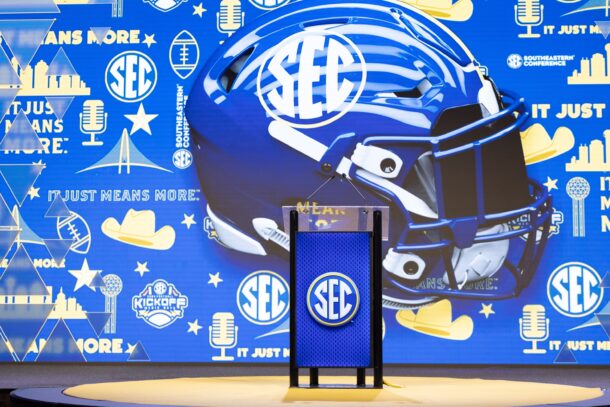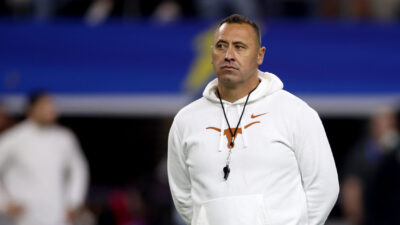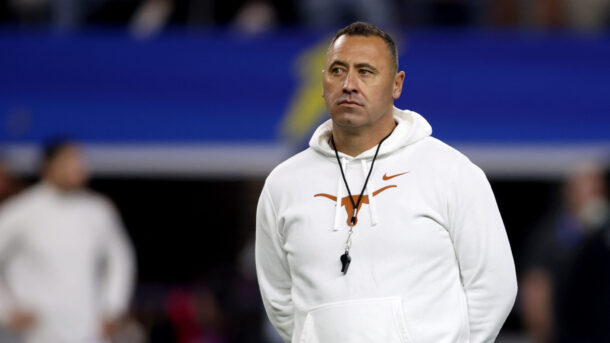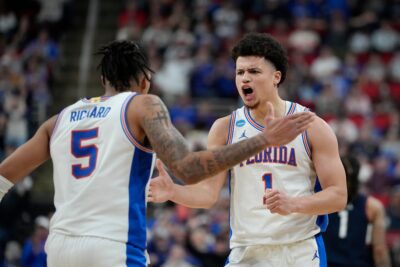Ad Disclosure
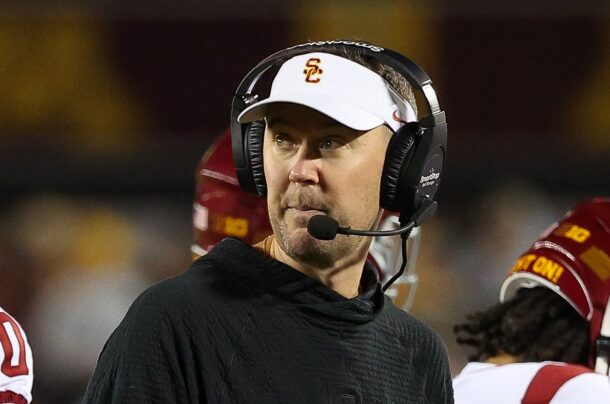
Lincoln Riley’s contract is Jimbo Fisher 2.0, with 1 fascinating difference
Besides sharing a disdain for Texas in their previous jobs, Lincoln Riley and Jimbo Fisher have something in common. Both of them signed 10-year mega contracts after leaving respected programs.
There’s a difference, though. Like, a fascinating difference.
At the end of Year 3 at Texas A&M, Fisher earned an extension on that mega-deal following the program’s best finish in the AP Poll since 1939. At the end of Year 3 at USC, Riley earned a reason for USC to fire him with cause and avoid potentially paying a $90 million buyout (according to Pete Thamel).
Yeah, that’s just a touch different.
You see, Riley’s contract is arguably the worst in college football. Thamel reported that USC still owed Riley $90 million at the end of 2024, despite the fact that his win totals decreased in Year 2 and Year 3, the latter of which included a 6-6 regular season in the Trojans’ Big Ten debut. Woof. Coaches with $17 million homes in Southern California usually don’t also have losing records in the Big Ten. Riley is 1-of-1.
Let’s get back to that original point, though. Fisher’s $76 million buyout that he was owed after being fired in 2023 didn’t have an out. At USC, Riley gave his bosses something to consider moving forward. In November, we found out that USC was put on NCAA probation for off- and on-field roles by analysts during the 2022-23 seasons. The program admitted that Riley was at fault. The irony is that the NCAA changed the rule to allow analysts to coach in 2024, but it was still deemed a violation because of when it occurred.
That begs the next question — would USC ever play that card in an attempt to move on from Riley? And if so, wouldn’t it get extremely messy if there was a Fisher-like buyout at stake?
We don’t know what it would take to get to that point. We do know that Riley wasn’t suspended, much less fired at season’s end. We also know that in fired-with-cause cases like Jeremy Pruitt at Tennessee, coaches with 8-figure checks might not go down without a fight. If Riley ever did get fired with cause, it’s fair to wonder if he’d argue that he wasn’t even suspended for the violation when it was reported on in 2024, which would make his case that the probation wasn’t the real reason he was fired. Instead, he could claim it was the school trying to wiggle its way out of paying the next Fisher-like buyout.
Keep that in mind during the latter half of the 2020s.
Barring a drastic turnaround, it’ll be difficult to justify Riley’s place as 1 of the 5 highest-paid coaches in the sport. The high point of Riley’s time so far included an 11-win season in Year 1 that ended with a Playoff-missing loss to Utah and a Cotton Bowl loss to Tulane. After 4 consecutive top-7 finishes at Oklahoma to start his head coaching career, Riley has 4 consecutive finishes outside the top 10, including 2 unranked finishes. He’s yet to record a win vs. an AP Top-10 team at USC, and since his 11-1 start in Year 2, he’s 15-13.
The optimistic projection for Riley is that after consecutive recruiting classes that finished outside the top 15, he’s currently got the No. 1 class in 2026. In theory, Riley’s 10-year megadeal suggests that he’ll have time to develop that class. In reality, that could end up being another thing he had in common with Fisher. In 2022, Fisher sent shockwaves through college football by signing a class that ranked No. 1, not just that year, but in the entire 247sports era. Fisher then went 11-11 in his next 22 games and he was fired 21 months after locking in that historic class. Fisher also had the grace of that 2020 season, but it still didn’t stop him from being fired after he was only 3 years into his extension, which was set to run through 2031.
Riley’s current USC contract is also set to run through 2031. With USC being a private university, the specifics of that contract are unknown. Thamel’s reporting that Riley would’ve had $90 million left on his initial $110 million contract at the end of 2024 suggests that either that the deal was significantly backloaded or that terms had been reworked at some point (the $90 million figure is only $20 million less than the initial $110 million contract after he was 3 years into the deal). Even if you average out $10 million annually for the next 3 seasons and subtract it from $90 million, Riley could still have somewhere around $60 million remaining on his contract at the end of the 2027 season.
Time will tell how all this gets sorted out. The unpredictable nature of the sport suggests it would be foolish to assume any outcome — even for a team with a team an over/under of 7.5 wins in 2025 (via FanDuel) — is imminent. Perhaps Riley will reverse course and avoid the same fate as Fisher.
For now, though, Riley’s NCAA violation might be the only thing separating him from being linked to Fisher for all the wrong reasons.
Connor O'Gara is the senior national columnist for Saturday Down South. He's a member of the Football Writers Association of America. After spending his entire life living in B1G country, he moved to the South in 2015.
